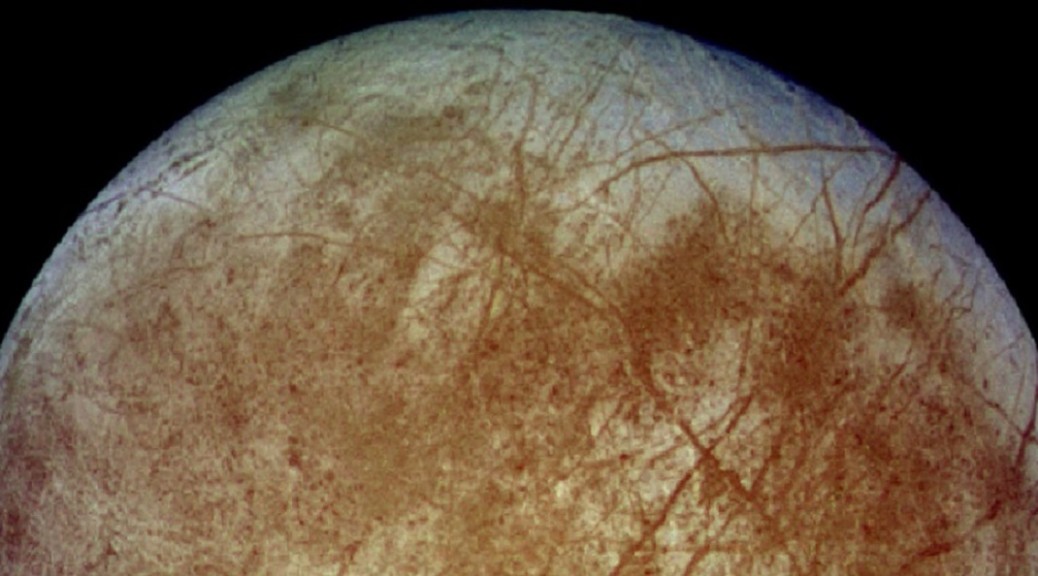Image: public domain, http://photojournal.jpl.nasa.gov/catalog/PIA00502
- In the above image, the dark orange lines crisscrossing Europa’s

Mosaic of images of the surface of Europa taken by the Galileo spacecraft, including the Conamara region, and showing surface features including lineae. Public domain image, http://photojournal.jpl.nasa.gov/catalog/PIA01092 surface are called lineae, and may result from fracturing of the surface crust of Europa from tidal flexing, a force related to the gravity exerted on Europa by Jupiter.
- Europa is strongly evidenced as having subsurface oceans of liquid water, with tidal flexing believed to provide the heat that keeps its oceans from freezing.
- Possible hydrothermal vents in the subsurface oceans of Europa (which could be caused by tidal flexing) could hypothetically provide a habitat for life, just as life clusters around hydrothermal vents in the oceans of Earth.
- Resources include: http://en.wikipedia.org/wiki/Europa_(moon)
© 2015 Fosdick EDS ☾><(((°>

